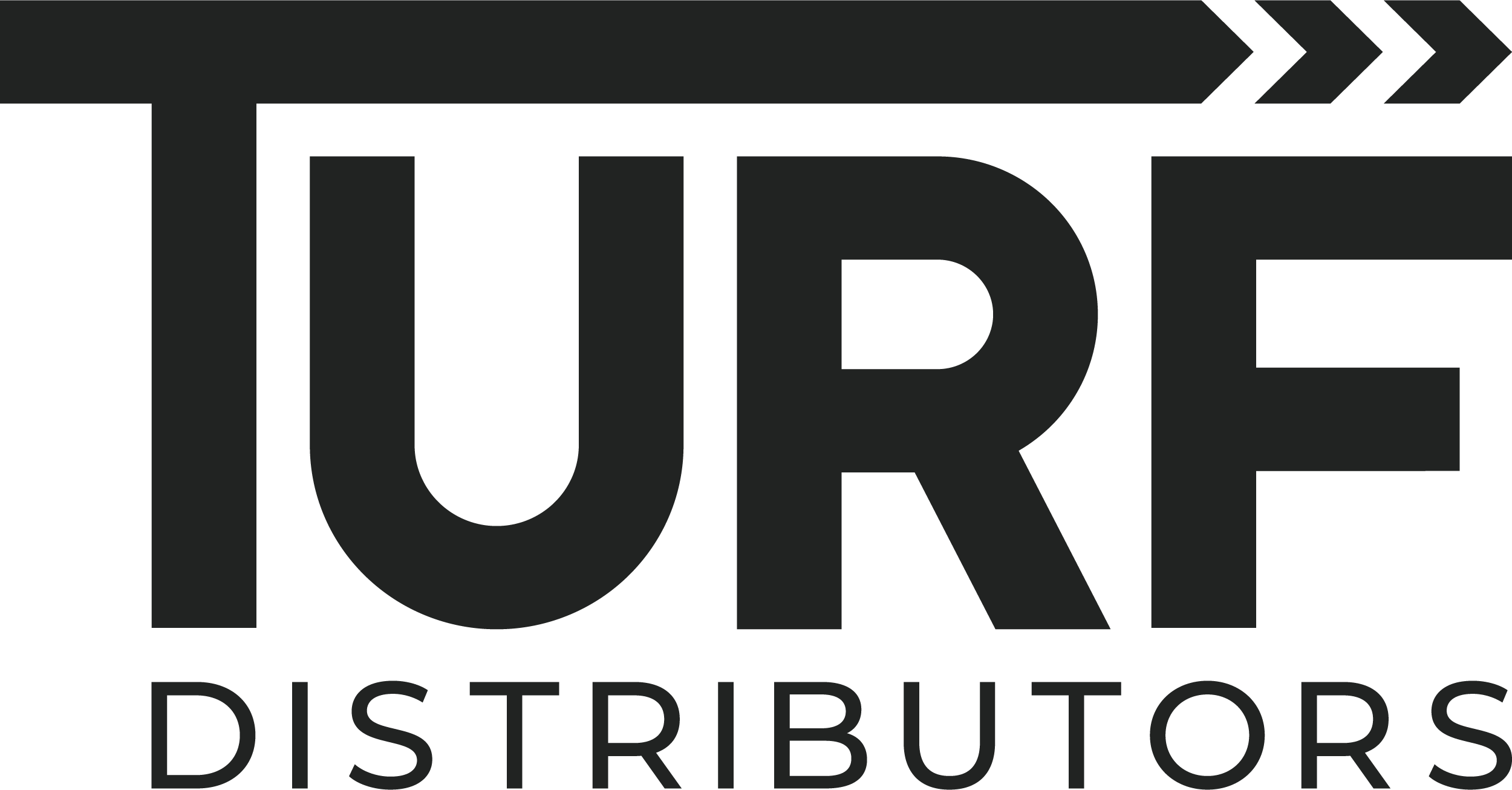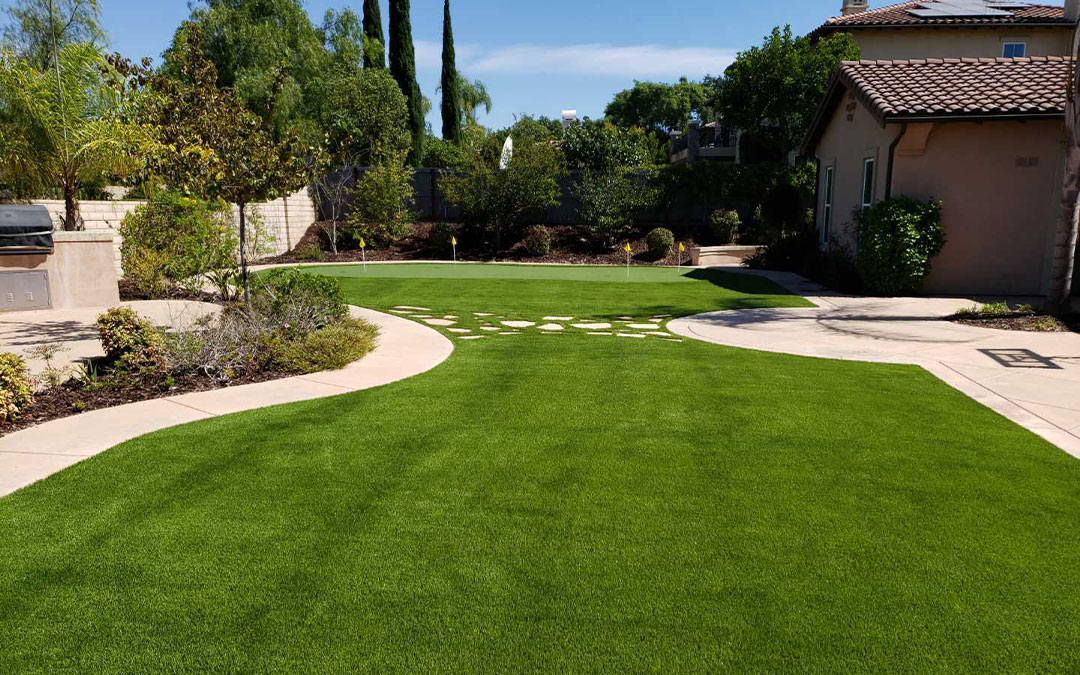
How do you find the best possible artificial turf for your budget? The answer is simple: do your research! Below we’ve created a helpful cheat sheet that explains all the critical components of artificial grass technology. Reading will teach about must-have features, application-specific technology, and what to avoid. We also provide fun and interesting information on a surprisingly nuanced and sophisticated product!
Key Features of Artificial Grass
Artificial grass has two critical components — blades and backings. The blades create the idyllic, green landscapes we all know and love, while the backings hold everything together.
Blade Shape
There’s a lot more to artificial grass blades than meet the eye! A blade’s shape and material consistency affects how it looks, feels, and holds up to stress. Here are seven essential blade shapes that every prospective buyer should know about!
C blades are built to withstand the pressure of heavy foot traffic. They offer greater resiliency than most blade shapes, creating a tougher, longer-lasting product. Because this design reflects more light than other blade shapes, it’s best suited for backyard use.
V blades‘ unique shape keeps them standing tall in the toughest conditions! The singular, hard angle fold down the center of the blade creates a stiff spine, which prevents the blade from folding and matting under heavy foot traffic.
W/ Wave blades disperse heat to keep turf lawns up to 15 degrees cooler on hot days. Their folded design reflects more light than other blade shapes, creating a more comfortable, natural-looking lawn.
Ωmega blades’ cutting-edge design strikes the ideal balance between softness and durability. It performs well in heavy foot traffic, while closely mirroring the look and feel of natural grass.
Diamond blades‘ silky smooth texture gently hugs feet, while its natural green aesthetic accurately recreates the look of living grass. Diamond blades are recommended for areas with low to medium foot traffic.
Flat blades are ideal for low-traffic areas! They offer a realistic look and soft-to-the-touch feel, but are not as durable as other blade shapes. Flat blades work nicely when mixed with W and Ω shaped blades to create a balanced blend of blade designs.
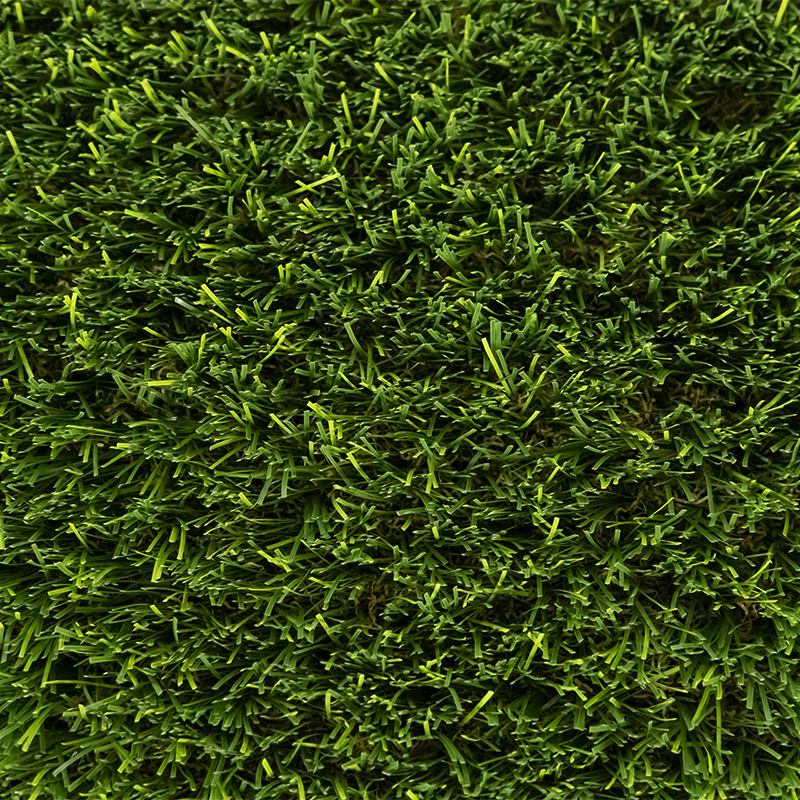
Yarn Quality
Just as important as blade shape is the quality of the yarn itself! Yarn is an industry term to describe the material used to create artificial turf blades. The most common materials for yarn are nylon, polyethylene, and polypropylene, with polyethylene being the most widely used. However, it’s important to know that there are actually several different grades of polyethylene, including C2, C4, C6, and C8. The number indicates the number of carbons in the polymer. Most artificial turf on the market is made from low-grade C2 and polyethylene, but at Turf Distributors, we only use C4 and above, plus most products feature C8 Durablade technology.
DuraBlade is stronger than other commonly used synthetic yarns! Its unique molecular structure offers increased resiliency and temperature resistance. This prevents flattening and fading over time, making it perfect for heavily used yards in sunny climates. DuraBlade is also softer and more natural looking than other commonly used yarns.
C6 yarn features an extended carbon chain. Products constructed using C6 yarn are better protected against UV radiation and everyday wear and tear and are ideal for medium to high-traffic areas.
C4 yarn features a longer-than-average carbon chain. It will hold up better than commonly used yarns and is ideal for medium to low-traffic areas.
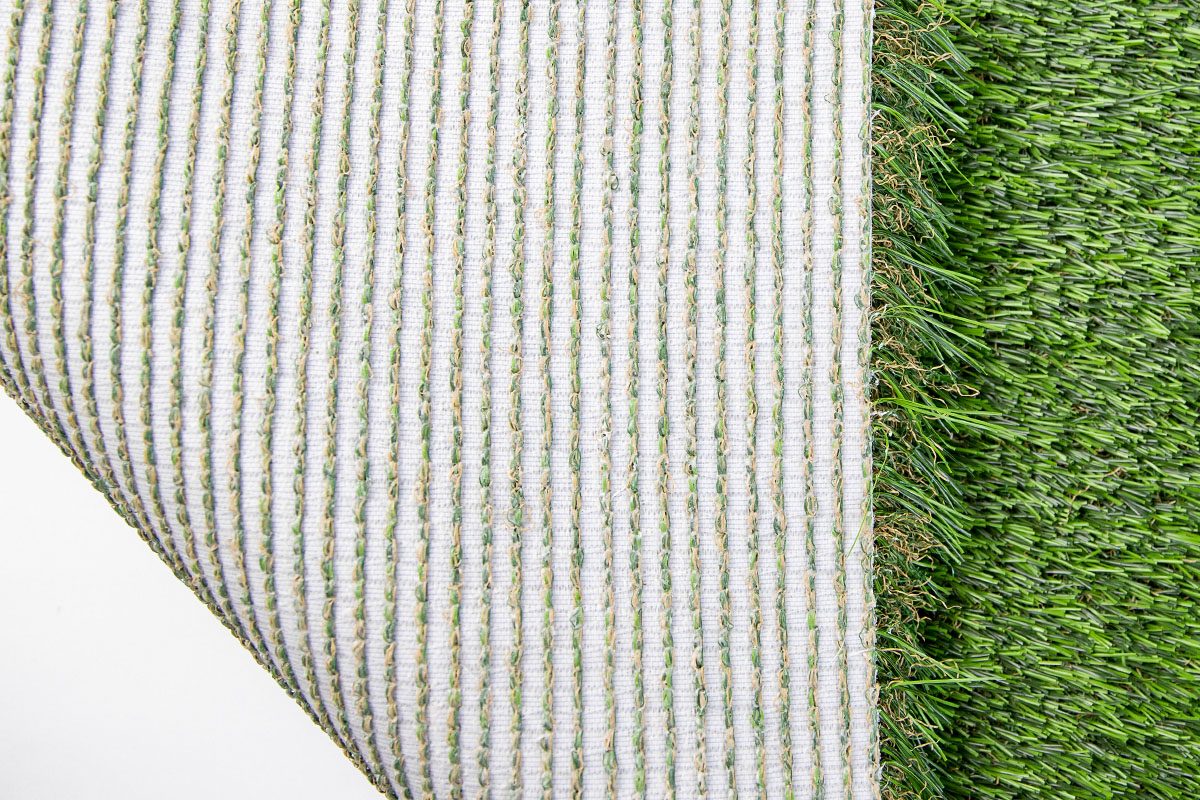
Backings
Artificial turf backings bind blades together and allow moisture to escape into the ground below. Quality backings create more comfortable living environments by quickly whisking away water.
CoolFlow backings are designed to reduce ambient heat, contour to the toughest angles, and dry faster than standard artificial turf. The pliable, all-white backing makes it comfortable and easy to work with. CoolFlow’s water-permeable, non-perforated backing quickly wicks away liquids, making it ideal for applications that require fast drainage. In fact, initial testing indicates that CoolFlow is capable of draining up to 800 inches of water per hour!
Optimum Flow backings offer exceptional drainage! They quickly whisk away rain and liquid pet waste to create a more comfortable living environment. This technology is a key feature of AGL’s Hydro Series. Optimum Flow backings drain liquids 8 to 10 times faster than a standard backing.
Polyurethane backings are prized for their toughness. This tear-resistant material won’t deteriorate or crumble in harsh weather and features superior drainage when compared to traditional latex backings.
Latex backings are best suited for indoor environments. Indoor applications don’t require nearly the same strength or water permeability as backings for outdoor turf.
FlexGrip backings are used in artificial grass putting greens to create more challenging contours. These bendable backings effortlessly cover the contours and angulations of even the trickiest terrain.
ArmorLoc features tightly woven layers that work with Veridian’s specialized yarn to create a powerful thermoset bond. ArmorLoc’s layers are woven and stitched together before fabrication to preserve the integrity of the product. This backing is non-directional, dimensionally, stable, and ensures no excess movement.
Silverback coating binds yarn firmly with its backing. It locks fibers into place by penetrating deep into the base of each backing and coating every individual stitch with its patented, moisture-resistant technology.
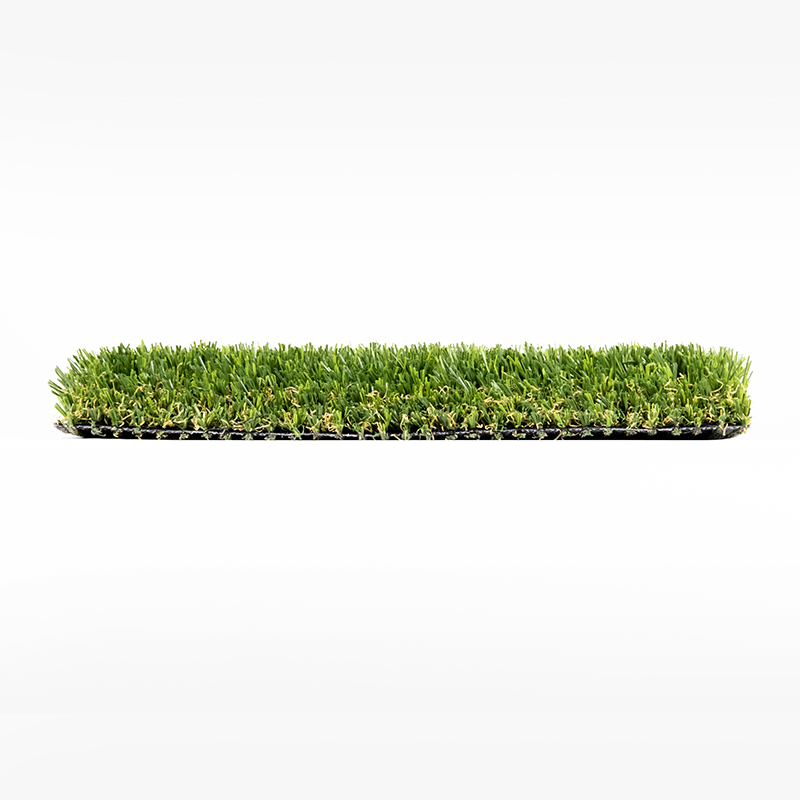
Thatching
The tiny fiber strands woven into artificial grass are known as thatching. They are small, thin, and typically gold in color. They are designed to look like the thin coating of grass blades that collects at the base of a real lawn. This little touch goes a long way toward creating a more realistic product. It also adds visual interest and helps to deflect heat.
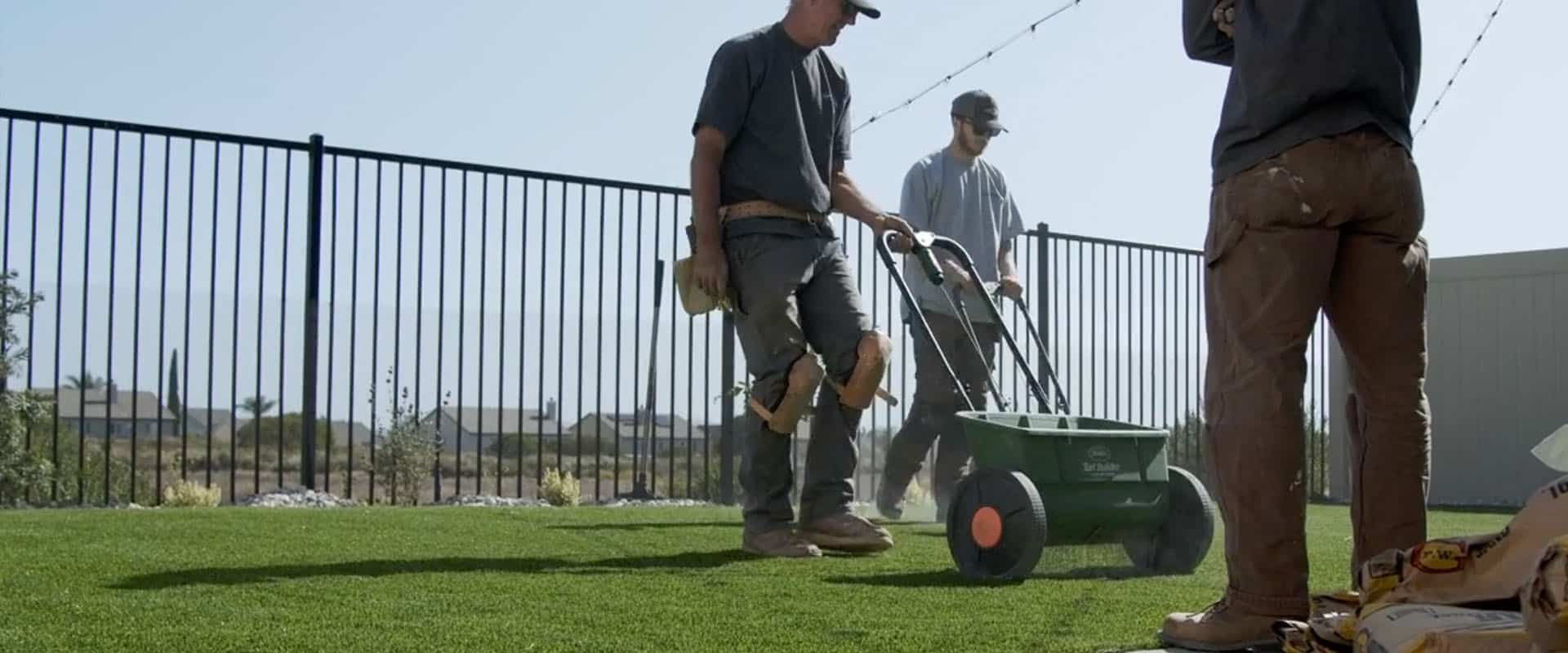
Infills
Infills are the gritty, sand-like material that you brush into artificial turf. They keep turf from flattening and matting over time.
Zeofill’s negatively charged molecular structure prevents the ammonium in pet urine from forming a foul-smelling gas. It’s made from organic materials and features antimicrobial properties that prevent the growth of harmful molds and bacteria. Better yet, ZeoFill will keep your lawn up to nineteen cooler than lawns with silica sand infills!
Wonderfill uses a Zinc Omadine™ coating to prevent the growth of bacteria, mold, and mildew. Its unique shape makes it less abrasive than other infills.
Envirofill uses silicone dioxide to keep artificial lawns cool on hot summer days. It also features a highly-rounded quartz core that resists compaction and is infused with Microban® antimicrobial protection, to prevent the growth of bacteria. This product is backed by a 16-year warranty!
Camofill is made with a specially sourced blend of multiple colors to give your lawn a pristine, natural look. Camofill uses Zinc Omadine™ to prevent the growth of bacteria, mold, and mildew.
Silica sand offers a pleasing aesthetic for yards with minimal foot traffic. It provides basic support, keeping blades stiff and upright, but lacks antimicrobial technology. For pets, kids, and heavy use, we recommend using a product with antimicrobial technology.
Sports Turf
Slit filament blades are made to endure heavy use without ripping or falling out. They feature a webbed design which increases durability and acts as a barrier against infill migration, minimizing maintenance costs.
Monofilament blades accurately recreate the appearance of living grass. They can be mixed with slit filament blades to create tough, natural-looking sports turf.
